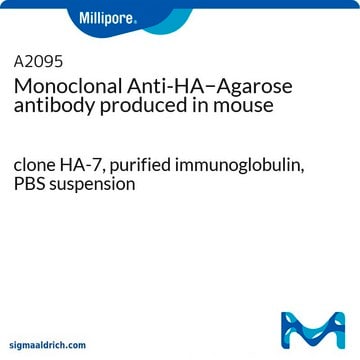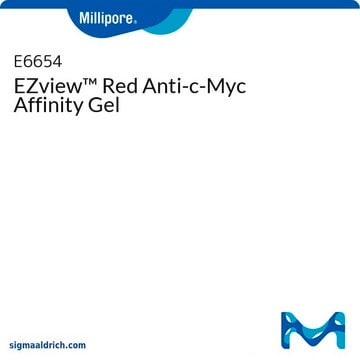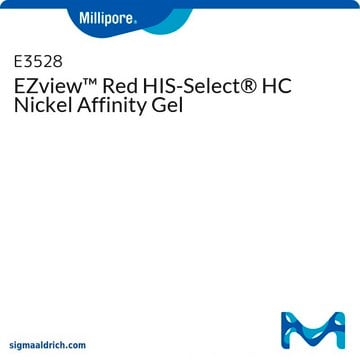E6779
EZview™ Red Anti-HA Affinity Gel
Synonym(s):
Anti-HA
About This Item
Recommended Products
shelf life
1 yr at 2‑8 °C
analyte chemical class(es)
proteins (hemagglutinin)
technique(s)
affinity chromatography: suitable
immunoprecipitation (IP): suitable
matrix
crosslinked agarose
capacity
≥0.4 mg/mL, gel binding capacity (HA-tagged fusion protein)
storage temp.
2-8°C
Related Categories
General description
Specificity
Application
Features and Benefits
- Increased visibility - Red color reduces risk of incidental aspiration
- Improved recovery of target protein by reduced accidental loss
- Higher reproducibility - More consistent yields
Other Notes
Physical form
Legal Information
related product
Storage Class Code
10 - Combustible liquids
WGK
WGK 3
Flash Point(F)
Not applicable
Flash Point(C)
Not applicable
Certificates of Analysis (COA)
Search for Certificates of Analysis (COA) by entering the products Lot/Batch Number. Lot and Batch Numbers can be found on a product’s label following the words ‘Lot’ or ‘Batch’.
Already Own This Product?
Find documentation for the products that you have recently purchased in the Document Library.
Customers Also Viewed
Related Content
Protein expression technologies for various expression systems supporting research, therapeutics, and vaccine production.
Our team of scientists has experience in all areas of research including Life Science, Material Science, Chemical Synthesis, Chromatography, Analytical and many others.
Contact Technical Service















